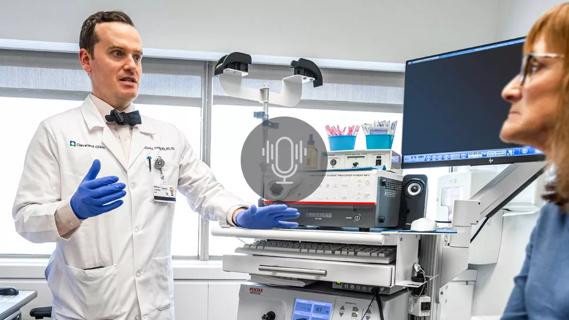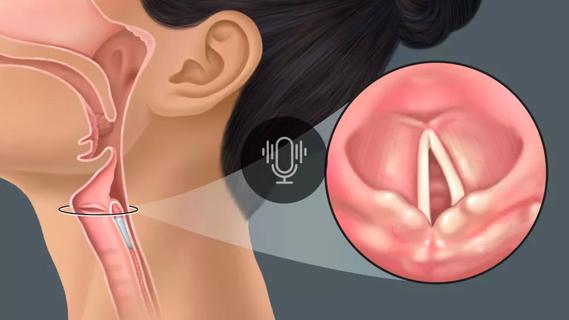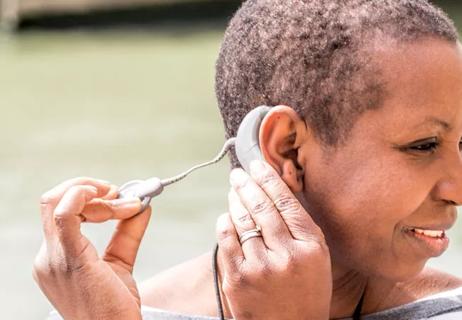Advertisement
Audiologists offer professional advice in a noisy world

By Sharon Sandridge, PhD, and Craig Newman, PhD
Advertisement
Cleveland Clinic is a non-profit academic medical center. Advertising on our site helps support our mission. We do not endorse non-Cleveland Clinic products or services. Policy
One-third of all permanent hearing losses can be prevented. By protecting our ears from recreational sound exposure that is too loud for too long, we can preserve our ability to hear the sounds of life for a lifetime. Getting this message out to the public has become more critical as our world becomes noisier, with concerts and sporting events promoting “louder is better.” Moreover, our risks of hearing loss have increased with the boom in personal music players and earbuds and the use of loud recreational vehicles such as snowmobiles, jet skis and motorcycles.
At Cleveland Clinic’s Head and Neck Institute, the Section of Allied Hearing, Speech and Balance has become more active in promoting the hearing loss prevention (HLP) message to the public on both a national and local level.
Nationally, we are closely involved in an American Academy of Audiology HLP program called the DiscovEARy Zone. The DiscovEARy Zone has spread the HLP message to audiologists as well as to the public through interactive exhibits held in the host city of the Academy’s annual meeting. Information has reached countless children and their parents through exhibits at venues across the U.S., including the Orlando Science Center, the Witte Museum in San Antonio and the Chicago Children’s Museum, as well as in convention centers in Phoenix, Charlotte and Denver.
In Cleveland, we have partnered with the Dangerous Decibels™ (DD) program to bring HLP to schools in Northeast Ohio (Figure). In 2015, we initiated the DD public health campaign by working with the Ohio Department of Health and Cleveland Clinic’s Office of Civic Education Initiatives. The federally funded DD program is designed to reduce the prevalence of noise-induced hearing loss by presenting interactive lessons to elementary school students on hearing, hearing loss, and HLP.
Advertisement
With items such as tuning forks and ping pong balls, we take a hands-on approach to show students that sound represents vibration. With the use of pipe cleaners, we show them how sound can damage our ears and how that damage can never be completely repaired. Students hear what it sounds like to have a hearing loss secondary to excessive sound exposure. Most important, they learn how to protect their hearing by walking away from a sound source, by turning down the volume on personal music players and by wearing hearing protection devices such as earplugs. (Earplugs are donated by 3M Corp. and are given to each student.)
In just one year, Cleveland Clinic audiologists, along with Doctor of Audiology students, have attended more than 20 schools and have reached more than a thousand students.
We also have partnered with the Cleveland Institute of Music to increase awareness among its students and faculty about the occupational risks of being a musician. Our lectures have incorporated many of our DD interactive activities. We also offer baseline hearing tests to all incoming students, as well as annual follow-up tests to monitor their hearing status.
Of particular interest to these musicians is the fact that we provide a snapshot of the sound output from their individual instrument as a way to illustrate their risks of hearing loss. For those who are more curious, we offer an opportunity to wear a dosimeter during all waking moments over a two-week period so that they can obtain a quantified and accurate measure of their sound exposure. Many of the musicians who used the dosimeter found that they had reached the recommended maximum dose of exposure after just a few hours of playing.
In summary, we emphasize that listening to sounds that are too loud for too long will cause a hearing loss, and that hearing loss is permanent. Even so, such a hearing loss is completely preventable by walking away, turning it down and wearing hearing protection.
Advertisement
Dr. Sandridge is Director of Clinical Audiology Services and Co-Director of the Audiology Research Laboratory; she has served as chairwoman of DiscovEARy Zone for the last 10 years. She can be reached at 216.445.8517 or sandridges@ccf.org. Dr. Newman is Section Head of Allied Hearing, Speech and Balance and Co-Director of the Audiology Research Laboratory. He can be reached at 216.445.8520 or newmanc@ccf.org.
Advertisement
Advertisement

Presentations you won’t want to miss

Bilateral superior laryngeal nerve block offers new treatment option for patients

Injections and surgical procedures are among the therapies for patients with early and late vocal cord paralysis

See you in Nashville, September 30 – October 4, 2023

Please join our staff as we participate in the following sessions at the Combined Otolaryngology Spring Meetings, May 3-7, 2023

Click through to learn more about our program

Using a care pathway approach, the Institute has improved care and reduced costs

Implants can make a difference sooner than you think